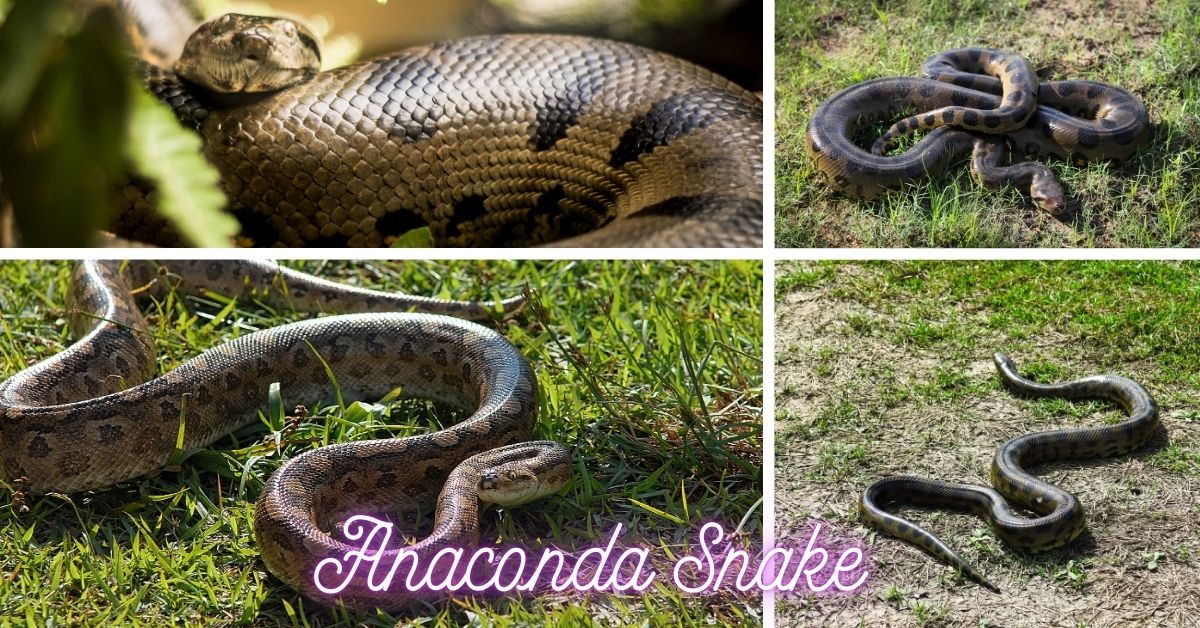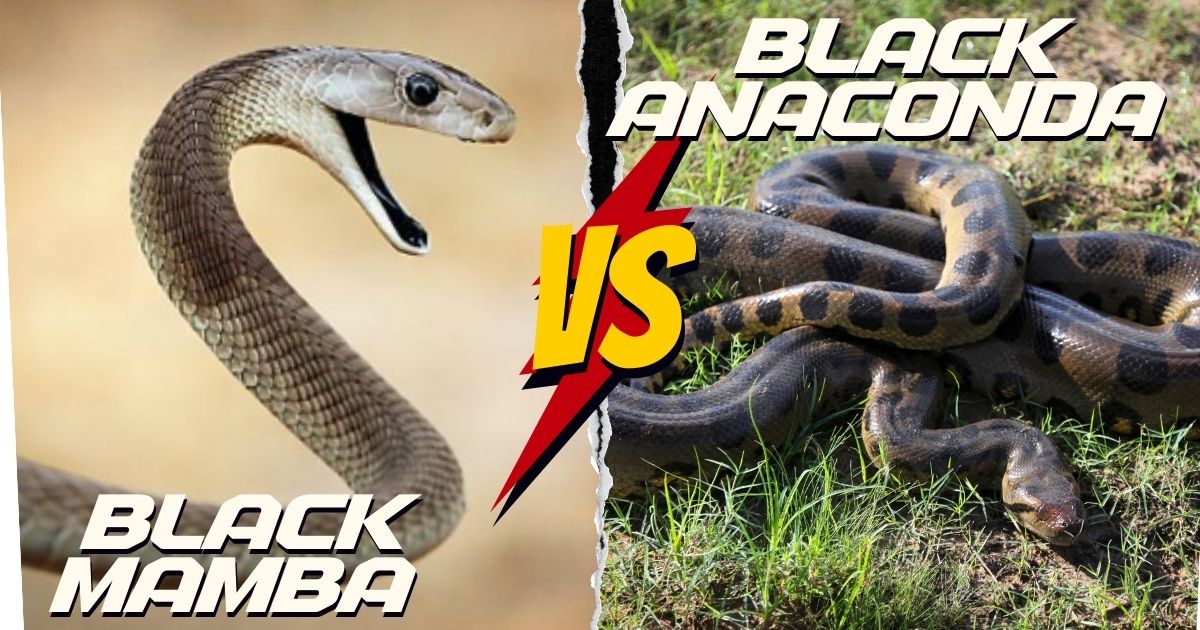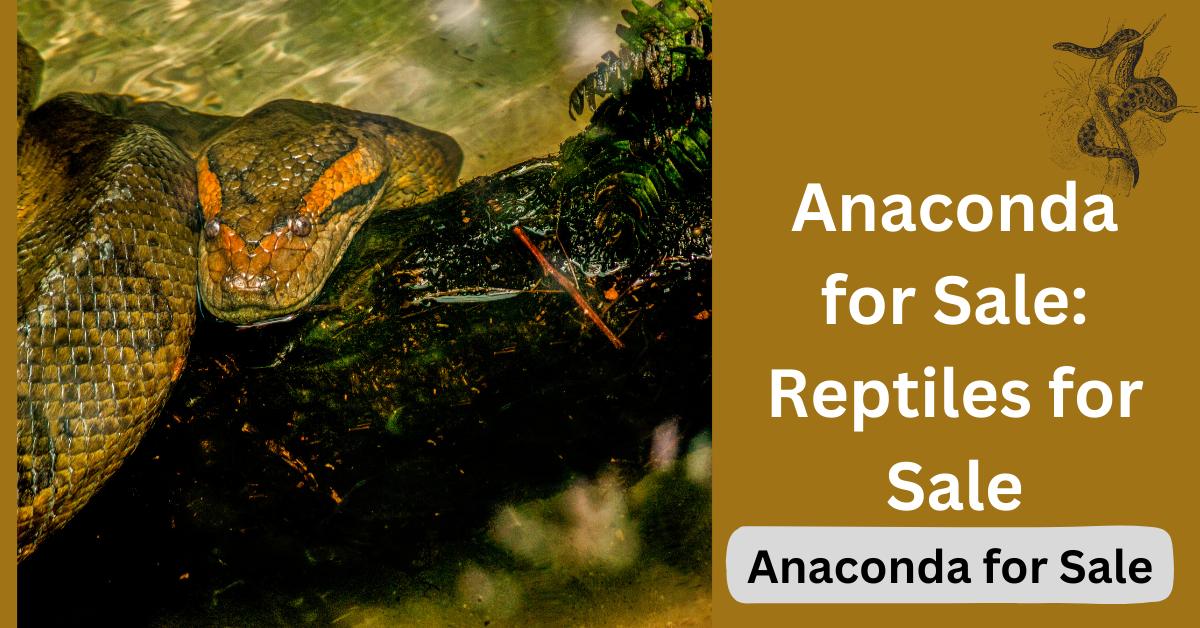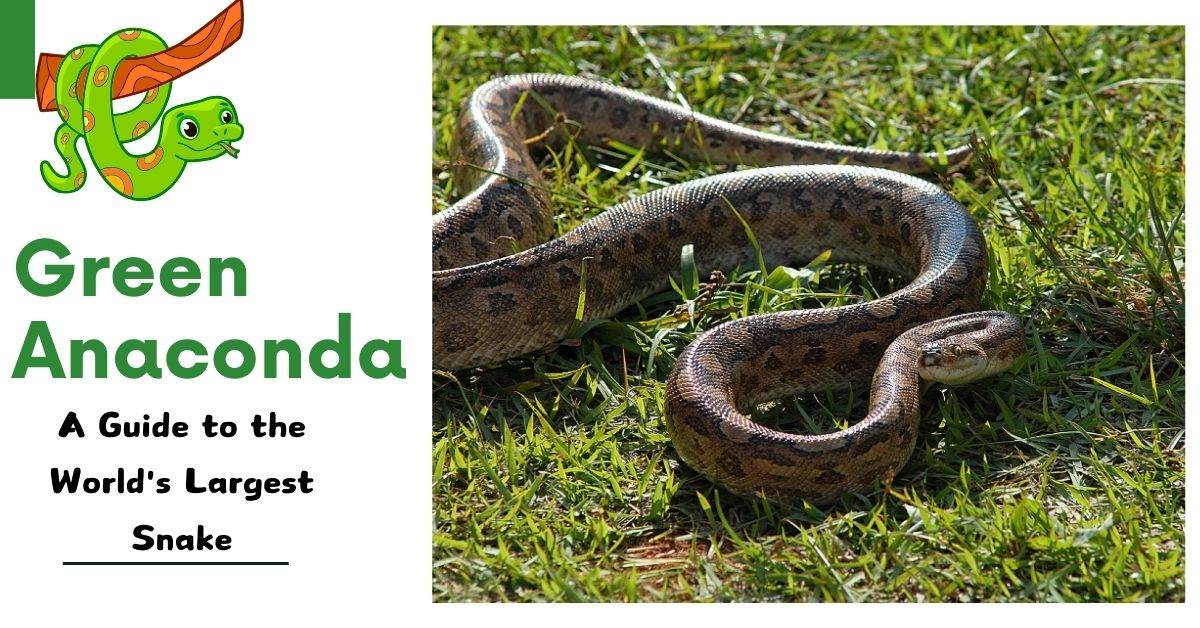
Anaconda Snake in Amazon Forest: Everything You Need to Know
- Introduction
- Understanding the Anaconda Snake in Amazon Forest
- Habitat and Distribution of Anaconda Snake in Amazon Forest
- Behavior and Ecology of Anaconda Snake in Amazon Forest
- Reproduction and Lifespan
- Importance of Anaconda Snake in Amazon Ecosystem
- Conservation Challenges
- Conservation Efforts
- What do I need to know about anaconda?
- Are there any anacondas in Amazon Forest?
- What do anacondas eat in the Amazon rainforest?
- What to do if anaconda attacks you?
- How many humans are killed by anacondas each year?
- Do anacondas bite people?
- What is the biggest enemy of the anaconda?
- FAQs About Anaconda Snake in Amazon Forest
- Conclusion
Introduction
There are many forests in today’s world but the most diverse and mysterious ecosystem is only in the Amazon forest which is home to most of the wild life. Many snakes are found in this forest. But the jungle is dominated by the Anaconda snake, which has no match for its length, strength, and thick body. The snake is mostly shrouded in mystery and fascination, playing an important role in the delicate balance of the Amazon rainforest. gives. In today’s article we will tell you some hidden secrets about Anaconda and Amazon forest.
Understanding the Anaconda Snake in Amazon Forest
What is the Anaconda Snake?
The boa constrictor snake in the Amazon backwoods is an individual from the Eunectes family, which incorporates a few huge, non-venomous snakes. Known for their amazing size and strength, boa constrictors are among the biggest snakes on the planet. They are semi-amphibian, investing a lot of their energy in water, which is vital for their endurance.
The most notable species is the green boa constrictor (Eunectes murinus), frequently alluded to as the monster boa constrictor because of its size. Different species incorporate the yellow boa constrictor (Eunectes notaeus), the dim spotted boa constrictor (Eunectes deschauenseei), and the Bolivian boa constrictor (Eunectes beniensis).
Physical Characteristics of Anaconda Snake
Size and Weight
The green boa constrictor, the biggest types of boa constrictor snake in the Amazon timberland, can grow up to 30 feet (9 meters) long and weigh in excess of 550 pounds (250 kilograms). This makes it one of the heaviest and longest snakes on the planet. The yellow boa constrictor, while more modest, can in any case arrive at lengths of around 15 feet (4.5 meters).
Coloration and Patterns
Boa constrictorsshow striking hue and examples that guide in cover. The green boa constrictoris overwhelmingly olive green with dark spots along its body, giving astounding cover in the dinky waters of the Amazon. The yellow boa constrictor has a yellow or light green body with dark spots, which assists it with mixing into the damp conditions where it resides.
Habitat and Distribution of Anaconda Snake in Amazon Forest
Natural Habitat
The boa constrictor snake in the Amazonbackwoods flourishes in an assortment of wetland conditions. These incorporate bogs, swamps, sluggish waterways, and overwhelmed woodlands. The thick vegetation and warm environment of the Amazon rainforest make an optimal living space for these gigantic reptiles.
Swamps and Marshes
Bogs and swamps offer boa constrictors sufficient chances for hunting and stowing away. The sluggish, supplement rich waters give a rich stock of prey, including fish, creatures of land and water, and little vertebrates. The thick vegetation assists boa constrictors with disguising themselves from both prey and hunters.
Rivers and Flooded Forests
Boa constrictors are brilliant swimmers and frequently tracked down in sluggish streams and overflowed woods. These conditions permit them to move subtly while hunting and give a shelter from possible dangers.
Geographic Range
While the boa constrictor snake in the Amazon woods is generally ordinarily connected with Brazil, its reach stretches out to a few other South American nations, including Colombia, Venezuela, Ecuador, Peru, and Bolivia. Various types of boa constrictors have somewhat differing dispersions, with the green boa constrictor being the most inescapable.
Behavior and Ecology of Anaconda Snake in Amazon Forest
Hunting and Diet
Boa constrictors are strong constrictors and fundamentally feed on a careful nutritional plan that incorporates an assortment of prey. Their eating regimen commonly comprises of:
Fish
Fish are a staple of the boa constrictor’s eating regimen, especially for the more youthful people. Boa constrictors are talented sea-going trackers and can trap fish with striking accuracy.
Birds
Birds are another normal prey thing. Boa constrictors frequently stand by close to the water’s edge to catch clueless birds that come excessively close.
Mammals and Reptiles
Grown-up boa constrictors can handle bigger prey, including well evolved creatures, for example, capybaras and, surprisingly, different reptiles like caimans. Their tremendous strength permits them to repress and consume prey a lot bigger than themselves.
Hunting Techniques
Boa constrictors utilize a mix of covertness and solidarity to catch their prey. They depend on their magnificent disguise to mix into their environmental factors and stand by without complaining for the right second to strike. When a prey thing is reachable, the boa constrictor lurches forward, gets it with its strong jaws, and chokes it until it chokes.
Reproduction and Lifespan
Breeding Season
The boa constrictor snake in the Amazon woodland breeds during the blustery season, normally among April and May. During this period, male boa constrictors search out females by following fragrance trails. The mating system includes multifaceted romance ceremonies, including weaving and scouring against one another.
Gestation and Birth
Subsequent to mating, female boa constrictors convey the eggs inside and bring forth live youthful, a cycle known as ovoviviparity. A solitary litter can comprise of 20 to 40 infants. The youthful boa constrictors are free from birth and should fight for themselves.
Lifespan
In the wild, boa constrictors can satisfy 10 years, in spite of the fact that their life expectancy can be longer in imprisonment where they are shielded from normal dangers and furnished with ordinary food and care.
Importance of Anaconda Snake in Amazon Ecosystem
Ecological Role
The boa constrictor snake in the Amazon woods assumes a pivotal part in keeping up with the strength of its biological system. As a top hunter, it directs the populaces of different species, keeping any single prey species from turning out to be excessively prevailing. This equilibrium is fundamental for saving the biodiversity of the rainforest.
Control of Prey Populations
By going after various creatures, including fish, birds, and vertebrates, boa constrictors assist with controlling the populaces of these species. This guideline forestalls overpopulation and guarantees that assets are conveyed all the more equally among various species.
Impact on Habitat Dynamics
Boa constrictors additionally impact the design and elements of their living space. Their presence influences the way of behaving and appropriation of different creatures, and their hunting exercises assist with molding the biological cooperations inside their current circumstance.
Conservation Challenges
Threats to Anaconda Snake in Amazon Forest
The boa constrictor snake in the Amazon woods faces a few critical dangers, essentially determined by human exercises. These include:
Deforestation
Deforestation is one of the most squeezing dangers to the Amazon rainforest. As huge areas of timberland are cleared for farming and advancement, the normal living space of the boa constrictor is obliterated. This deficiency of natural surroundings lessens the accessibility of food and asylum for these monster snakes.
Habitat Destruction
Close by deforestation, natural surroundings annihilation from mining, logging, and foundation projects further parts the boa constrictor’s environment. Divided environments make it more trying for boa constrictors to track down reasonable day to day environments and prey.
Illegal Wildlife Trade
Boa constrictors are once in a while focused on for the unlawful untamed life exchange. Their size and noteworthy appearance make them alluring to gatherers and merchants. This unlawful exchange compromises individual boa constrictors as well as effects their populaces and generally endurance.
Conservation Efforts
Protected Areas
Laying out safeguarded regions is a urgent move toward preserving the boa constrictor snake in the Amazon woods. These regions give a place of refuge to boa constrictors and other untamed life, assisting with protecting their regular living space and diminish human effect.
Sustainable Practices
Advancing economical land-use rehearses is fundamental for safeguarding the Amazon rainforest and its occupants. This incorporates supporting practical farming, capable logging, and eco-accommodating improvement projects that limit natural effect.
Education and Awareness
Bringing issues to light about the significance of boa constrictors and their part in the biological system is fundamental for protection. Instructing neighborhood networks and the overall population about the meaning of saving untamed life and their natural surroundings can prompt more prominent help for preservation endeavors.
What do I need to know about anaconda?
Boa constrictors are captivating animals! Here are a few central issues about them:
- Species: The expression “boa constrictor” generally alludes to the green boa constrictor (Eunectes murinus), however there are different species, including the yellow boa constrictor (Eunectes notaeus), the dim spotted boa constrictor (Eunectes deschauenseei), and the Bolivian boa constrictor (Eunectes beniensis).
- Size: Green boa constrictors are among the biggest snakes on the planet. They can arrive at lengths of north of 20 feet (6 meters) and weigh in excess of 500 pounds (230 kilograms). In any case, they are much of the time a piece more modest in nature.
- Appearance: They have an unmistakable example with olive green and dark spots that assist with covering them right at home. Their huge, strong bodies and expansive heads are appropriate for an amphibian way of life.
- Diet: Boa constrictors will be constrictors, meaning they fold over their prey and crush it until it chokes. Their eating routine incorporates many creatures, from fish and birds to bigger vertebrates like deer and capybaras. They could in fact take on caimans and periodically different boa constrictors.
- Conduct: They are for the most part single animals. Boa constrictors invest a lot of their energy in water, where they are magnificent swimmers. Ashore, they are more lumbering and less light-footed.
- Preservation Status: They are not right now recorded as jeopardized, however living space obliteration and hunting could present dangers to their populaces.
- Social Effect: Boa constrictors have a huge presence in nearby fables and media. They’re frequently depicted as fearsome and baffling, which can once in a while prompt overstated view of their risk.
Understanding boa constrictors can help in valuing their part in the environment and the legends that encompass them. On the off chance that you have explicit inquiries or need subtleties on a specific perspective, go ahead and inquire!
Are there any anacondas in Amazon Forest?
Indeed, boa constrictors are tracked down in the Amazon Rainforest. The green boa constrictor, which is the biggest and heaviest snake on the planet, is local to the bogs, swamps, and sluggish floods of the Amazon Bowl. They favor these sea-going conditions and are fantastic swimmers, frequently investing a ton of energy in the water. The thick rainforest and wetland regions give ideal circumstances to them.
What do anacondas eat in the Amazon rainforest?
In the Amazon rainforest, boa constrictors have a different eating routine. These huge snakes are entrepreneurial hunters and can eat different creatures, including:
- Fish: They frequently chase fish that are plentiful in their watery living spaces.
- Birds: They might snare birds that approach the water.
- Warm blooded creatures: Bigger boa constrictors can go after vertebrates, for example, capybaras, which are among their favored focuses because of their size.
- Reptiles: They could likewise eat different reptiles, including caimans.
- Creatures of land and water: Frogs and different creatures of land and water can likewise be on their menu, particularly for more modest boa constrictors.
Boa constrictors are known for their capacity to bring down prey a lot bigger than themselves, because of their strong narrowing skills.
What to do if anaconda attacks you?
Experiencing a boa constrictor can be alarming, yet knowing how to respond can assist you with remaining safe. This is the very thing that you ought to do assuming you end up in such a circumstance:
- Keep mentally collected: Attempt to stay as quiet as could be expected. Overreacting can exacerbate things and cloud your judgment.
- Keep away from A showdown: Boa constrictors are by and large not forceful towards people except if they feel compromised. Assuming you spot one, abstain from making unexpected developments or moving toward it.
- Step back Leisurely: Assuming the boa constrictor is in your way, step back leisurely and cautiously. Ensure you don’t betray it.
- Make Distance: Put however much distance among you and the snake as could be expected. Boa constrictors are strong swimmers and can move rapidly in water, so it is critical to escape their reach.
- Try not to Attempt to Deal with It: Boa constrictors are enormous and solid snakes. Endeavoring to deal with or catch one yourself can be incredibly hazardous.
- Look for Help: Assuming you’re in a space where boa constrictors are known to reside, illuminate neighborhood specialists or untamed life specialists about the experience. They can offer exhortation and help.
- Crisis Reaction: In the event that a boa constrictor assaults, safeguard your imperative regions and attempt to free yourself assuming it tightens you. Boa constrictors commonly choke their prey, so utilizing any suitable instruments or has a problem with to assist with liberating yourself could be essential.
Keep in mind, boa constrictor assaults on people are uncommon. Most frequently, these snakes will stay away from human contact whenever allowed the opportunity.
How many humans are killed by anacondas each year?
Boa constrictors, especially the green boa constrictor, are among the biggest snakes on the planet, yet they are not liable for countless human passings every year. While there have been interesting reports of assaults, these examples are remarkable and normally happen when people infringe on their environment or handle them inappropriately.
Generally speaking, there are not very many recorded instances of boa constrictors killing people yearly. Most collaborations among boa constrictors and individuals don’t bring about deadly results. The risk presented by boa constrictors is in many cases misrepresented in famous media, however in actuality, they are bound to keep away from people than effectively search them out.
Do anacondas bite people?
Boa constrictors by and large don’t search out people to nibble them. These enormous snakes are regularly more keen on their normal prey, similar to fish, birds, and warm blooded creatures. In any case, assuming that they feel undermined or cornered, they could nibble with good reason. Boa constrictors are strong constrictors, so their essential strategy for quelling prey is to fold over it and press, instead of utilizing toxin. It’s actually significant that while chomps are intriguing, they can be serious because of the potential for disease or extreme injury.
What is the biggest enemy of the anaconda?
The boa constrictor, quite possibly of the biggest snake on the planet, has moderately scarcely any regular adversaries because of its size and strength. Be that as it may, its essential dangers come from people and other huge hunters.
- People: Natural surroundings annihilation, hunting, and the unlawful pet exchange are critical dangers to boa constrictors. Human exercises can lessen their regular natural surroundings and lead to coordinate contentions.
- Puma: In the wild, panthers are among the couple of hunters that can take on a huge boa constrictor. Panthers have unquestionably strong jaws and can convey a lethal nibble to the snake.
- Other Enormous Hunters: at times, bigger savage creatures like caimans might represent a danger to more youthful or more modest boa constrictors.
Notwithstanding these dangers, the boa constrictor stays a predominant hunter in its current circumstance, frequently at the head of the pecking order in its oceanic and semi-sea-going territories.
FAQs About Anaconda Snake in Amazon Forest
How Big Can an Anaconda Snake Get?
The green boa constrictor, the biggest types of boa constrictor snake in the Amazon woods, can arrive at lengths of up to 30 feet (9 meters) and weigh north of 550 pounds (250 kilograms). Different species, like the yellow boa constrictor, are more modest, growing up to 15 feet (4.5 meters).
Are Anacondas Dangerous to Humans?
While boa constrictors are strong hunters, assaults on people are very uncommon. They for the most part keep away from human contact and posture little danger whenever left undisturbed. Most experiences happen when individuals enter their regular territory.
What Do Anacondas Eat?
Boa constrictors are rapacious and have a changed eating routine that incorporates fish, birds, well evolved creatures, and reptiles. They are known for their capacity to consume prey a lot bigger than their own head by disjoining their jaws.
How Long Do Anacondas Live?
In the wild, boa constrictors can satisfy 10 years. In imprisonment, where they are shielded from normal dangers and gave ordinary food and care, they can reside longer.
How Can We Help Protect Anacondas?
To assist with safeguarding boa constrictors and their environment, support protection drives that emphasis on saving the Amazon rainforest. Advocate for feasible practices and bring issues to light about the significance of natural life protection to guarantee the endurance of these staggering animals.
Conclusion
The boa constrictor snake in the Amazon timberland is a surprising and fundamental piece of one of the world’s most different biological systems. With its great size, interesting ways of behaving, and vital natural job, the boa constrictor is an image of the loftiness and intricacy of the Amazon rainforest. In any case, this lofty snake faces huge dangers from human exercises, including deforestation, territory obliteration, and unlawful natural life exchange.





I was just as enthralled by your work as you were. The visual display is refined, and the written content is of a high caliber. However, you seem anxious about the possibility of delivering something that could be perceived as questionable. I believe you’ll be able to rectify this situation in a timely manner.
Yes sir I will do it very soon